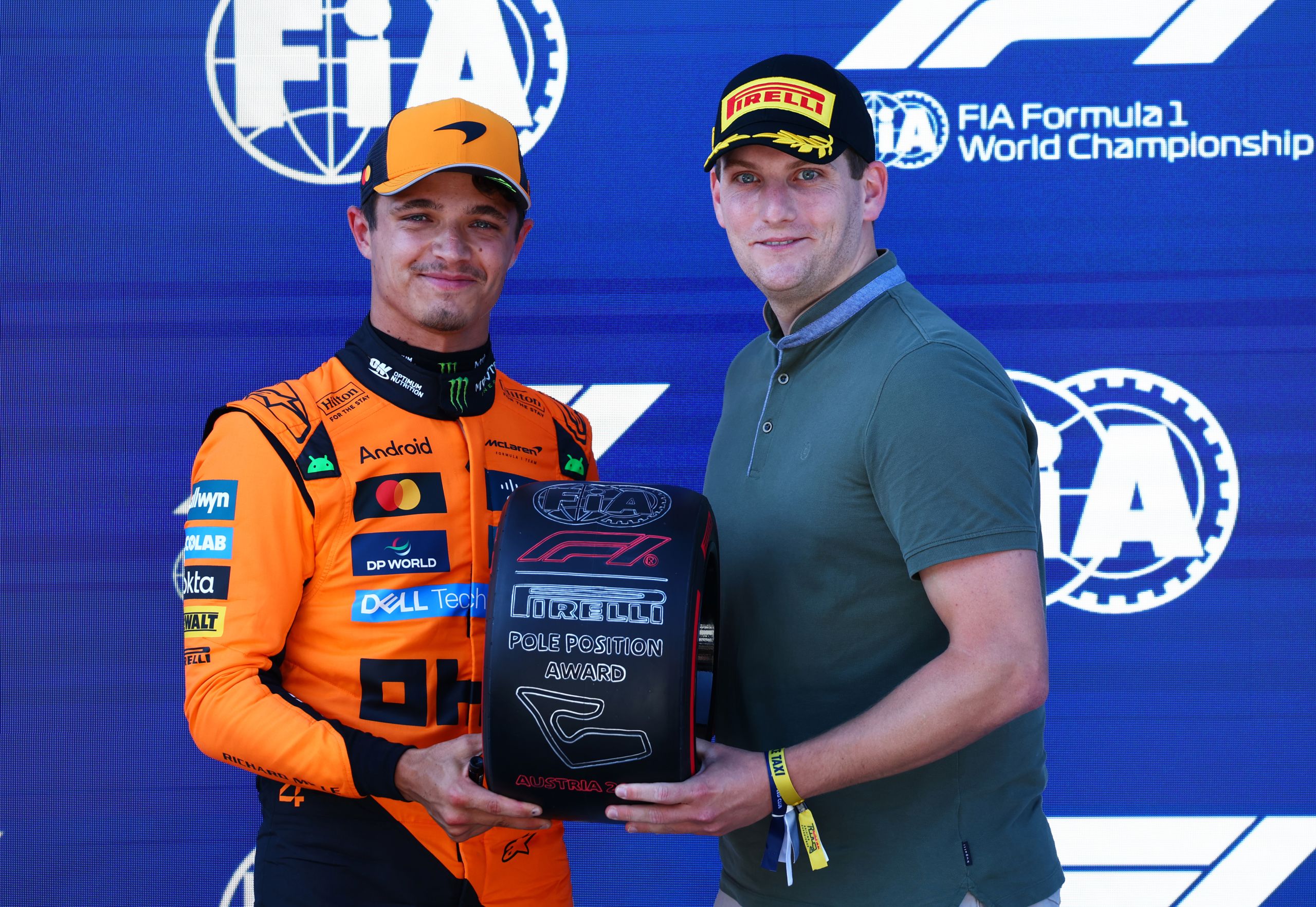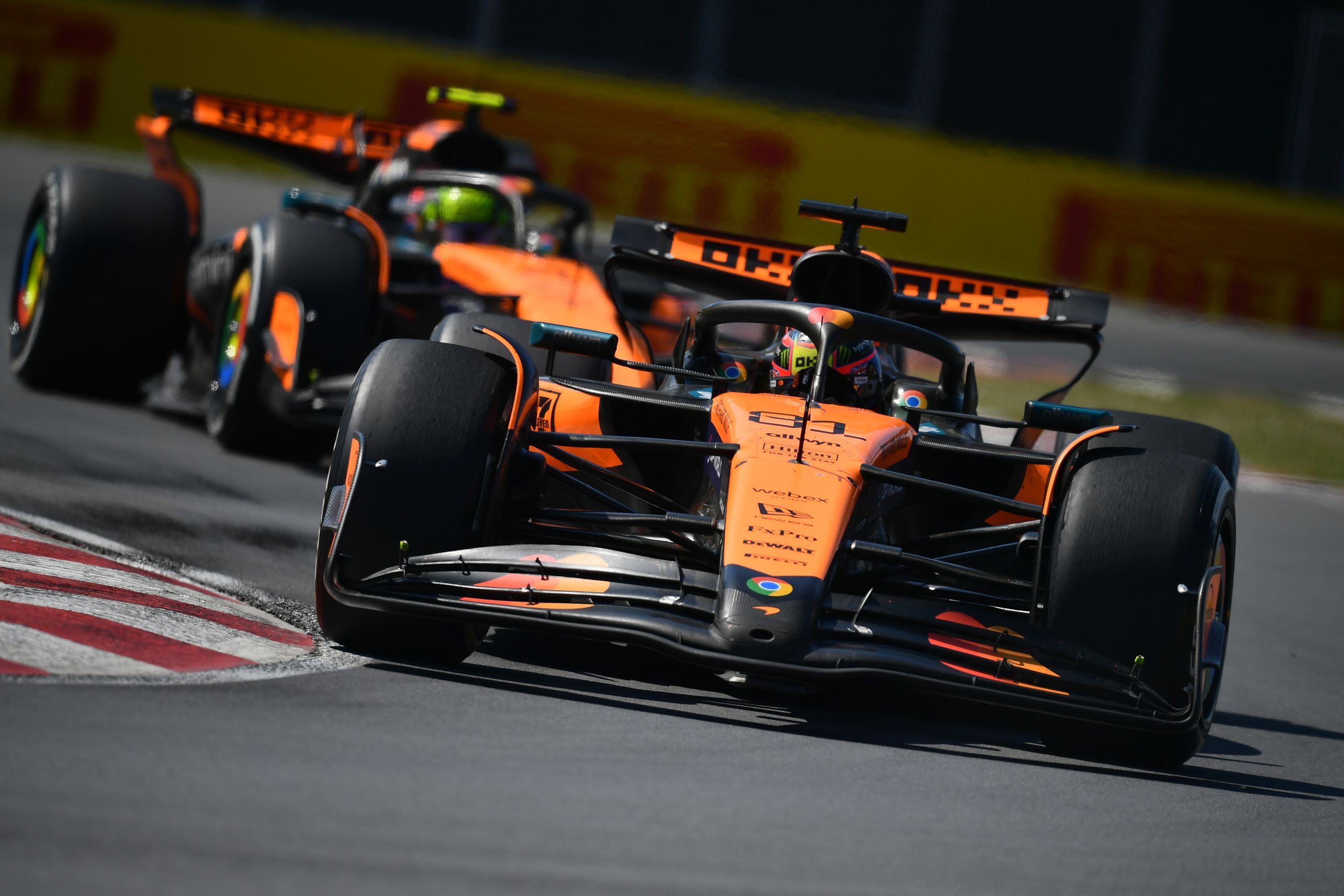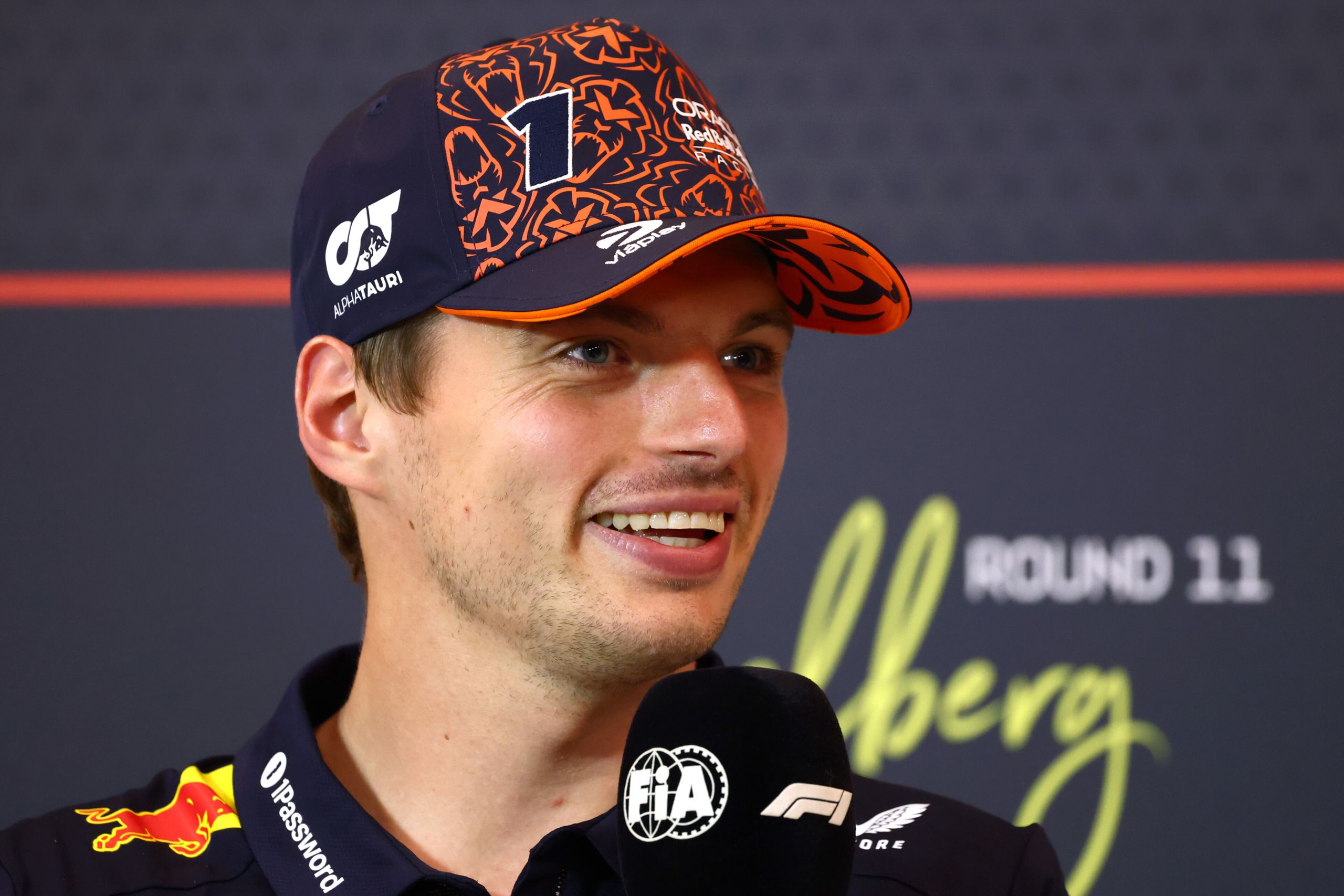How Do You Start A Formula 1 Engine?
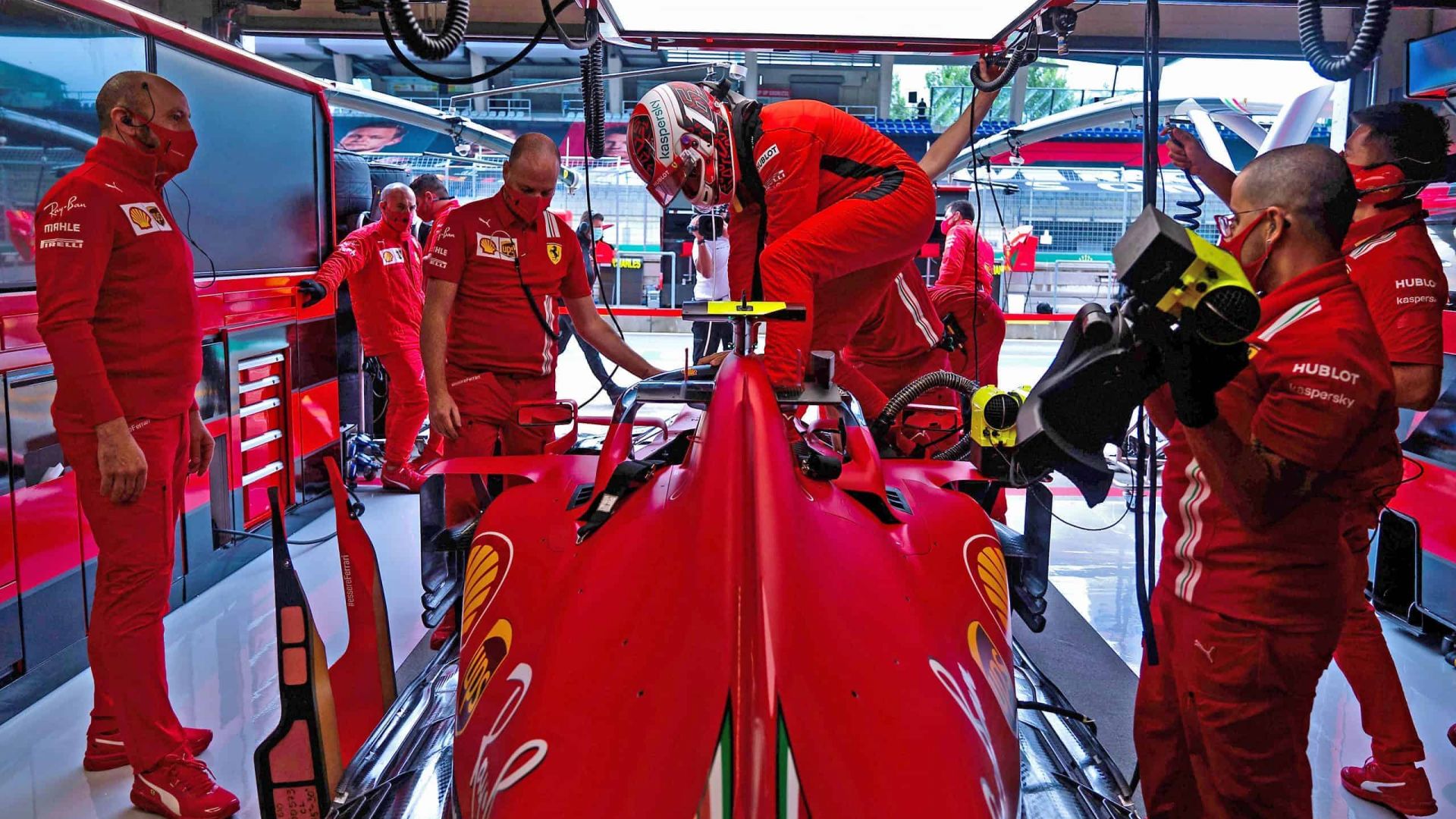
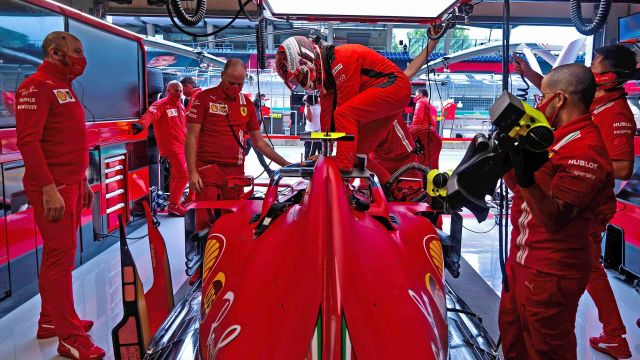
How do you start a FORMULA 1 engine? FORMULA 1 cars are unlike streetcars where we insert a key and turn it to start the engine. Nor is pressing a button going to get it started. So how do you start an F1 car? After heating the engine and the oil to a specified temperature cranking is done to lubricate the parts of the engine. All the parameters of the Power Unit are checked and only when they meet the specified temperatures and other requirements is the engine fired up.
Watch: How do you start an F1 car?
How do you start a Formula 1 engine?
Before firing up the engine, engineers check the various parameters of the different components of the Power Unit and the car.
Only once all the parameters are to the engineers’ satisfaction is the engine started and then warmed up.
A strict procedure is followed when starting a Formula 1 engine in order to prevent damage to the rotating parts of the engine and those associated with it.
All heating and cranking are done externally and the engine is cranked to lubricate the parts before firing it into life.
The car has to deliver maximum power at the start to ensure a quick getaway off the line at the all-important race start.
This means retaining the ES of the Power Unit fully charged while using external equipment to start the engine.
After all, a driver would not like to start on the grid with a half-charged ES in the Power Unit which could prove detrimental to a good start in the race.
This means that an F1 engine is fired up only when all the parameters of the various elements of the Power Unit are at their optimum.
Let us take a look at the general starting procedure followed when starting a Formula 1 engine.
What is a Formula 1 Power Unit?
Since 2014, Fédération Internationale de l’Automobile (FIA) has stipulated that all cars participating in F1 races will use V6, 1.6-litre turbocharged direct injection engines.
Recovery of heat energy from the exhaust and the kinetic energy (when braking) was permitted which helped the car generate more power.
The rpm of a Formula 1 engine, at 15000 rpm, is almost two to two and a half times more than a car that we use on regular roads.
There are six main elements in a Formula 1 car Power Unit among which the Internal Combustion Engine (ICE) is the main component and connects the chassis to the gearbox.
The second element is the turbocharger (TC) which regulates the density of the air supplied to the combustion galleries of the engine helping it to function more efficiently and generate more power.
Two Motor Generators Units (MGUs) contribute to retrieving the heat and the kinetic energy and supplying the reclaimed power to generate more power for the car.
While the Motor Generator Unit-Kinetic (MGU-K) reclaims and stores the energy when a car is braking, the Motor Generator Unit-Heat (MGU-H) recovers energy from the heat of the exhaust.
The energy harvested by MGU-K and the MGU-H is stored in the form of electrical energy in a battery called the Energy Store (ES) and is supplied when the driver requires it.
The Control Electronics (CE) is the last but the most important element of the Power unit and controls all the parameters and functions of the car.
Put simply, the CE with thousands of wires connected to it, is the brain or the CPU of the car and lets the driver control the functions of the various elements of the Power Unit.
When engineers start up the car their computers are connected to the CPU enabling them to monitor the various parameters of the engine and the other components of the car.
FORMULA 1 drivers are allowed to use three each of ICE, TC and MGU-H and 2 each of MGU-K, ES and CE in one season.
Any driver using more elements during a season will receive a grid place penalty in the next race.
How To Start A Formula 1 Car: The Steps
Step 1: Heating the engine
The engine is initially heated by a purpose-built pump that circulates hot coolant through the coolant passages of the engine.
The engine needs to be heated to a specific temperature and its chambers lubricated by hot oil to prevent abrasion of the moving parts.
The pump is mounted on a trolley and is connected to the engine’s coolant passages with hoses via two plugs.
The engine is heated to a temperature of around 80 degrees centigrade via the external hot coolant circulating pump.
The Engine Control Unit (ECU) is connected to the laptop computer of a technician who monitors the various parameters of the engine and reports to the supervising engineer.
A cable connected to the CE and to the laptop helps the engineers in continuously monitoring the position, temperatures and the pressures of the elements of the Power unit.
The starting team also pumps in compressed air in a bottle which is connected to the engine which will counterbalance any leaks in the pneumatic valves when starting.
At this point, the engine is dry as the oil has drained to the oil tank where the oil is also heated to a specified temperature.
Step 2: Heating the engine oil
Heating the engine and the engine oil is done simultaneously and is monitored on computers by different technicians on their respective laptop computers.
While the engine is being heated the engine oil has to be heated to a similar temperature in order to lubricate the moving parts of the engine.
The engine oil is heated outside the oil tank by a specially designed warming pump which circulates the oil through itself and the tank.
The technician monitoring the oil heating device has to ensure that the engine oil is heated gradually and evenly to avoid hot spots in the engine oil.
Hot spots can break down the chemical composition of the oil in which they occur which in turn can cause engine problems.
Step 3: Lubricating the engine
Although the engine and the oil have reached the optimum temperature to fire up the engine, the engine cannot be fired up yet because the engine galleries are not lubricated.
A powerful external electric starter motor with a reduction gearbox and a powerful battery take care of the lubrication of the engine and the other components coupled to it.
The external starter motor is connected to the engine via a long shaft pushed through an orifice to engage with the input gearbox shaft.
A cable connects the throttle, clutch and the gearbox control to a laptop computer monitored by technicians.
With the car gearbox set in neutral, a switch on the starting supervisor’s computer prevents the engine from firing till the control switch is switched on.
The starter motor cranks up the crankshaft for a specified period of time depending on how long the engine has been idle.
It takes only a few seconds of cranking for an engine that has recently returned from a few laps on the circuit as there will be residues of warm oil on the engine surfaces.
It takes much more cranking time to properly lubricate an engine that is started for the first time for the day.
Technicians continuously monitor the oil temperature, oil pressure, engine temperature and coolant temperature.
Step 4: Starting the engine
The engine can be started when the specified engine temperature, oil temperature and the oil pressure have been reached and the engine galleries lubricated.
The engine starting supervisor puts the starting control switch on and gives the go ahead to a technician.
The technician/mechanic switches the fuel systems and the ignition on in the cockpit of the car and fires up the engine.
The engine of the car is cranked using the starter until it fires up and an Engineer controls the engine with a laptop computer monitoring the warm-up procedure.
While the engine is warming up the engineer concerned has control over the throttle as he monitors the various parameters of the engine and the car.
The engine idles for a while at an rpm of 3000-4000 while the engineer follows the warm-up procedure.
The engineer confirms that the temperatures of the engine and the oil and the pressures meet the specifications at various rpm checkpoints.
Once the engineer is satisfied that the engine meets all the specifications when running at the various checkpoints, he may shut the engine if the car is about to take off to the track.
Before shutting off, the engine is run at 7,000 rpm for a few seconds to ensure that the oil will get sufficiently heated up and will completely drain from the engine to the oil tank.
Once the oil settles in the tank, the engineers will check the level and quantity of the oil in the tank.
Step 5: Maintaining the temperatures and pressures of the engine
An electronic oil level sensor in the oil tank is connected to the engineer’s laptop which enables him to check the amount of oil in the car before the car goes to take its position on the grid.
Since the engine is air aspirated and the car is stationary, the engine is shut off to prevent it from overheating.
The temperatures and the pressures of the engine are monitored continuously until the driver gets into the cockpit.
Till the driver takes control of the car, intermittent short fire ups may be done without the aid of external equipment to ensure that the temperatures and pressures are maintained.
Only when the engineers are satisfied that the car is ready to join the grid, will the driver climb into the cockpit and check the parameters for himself.
Formula 1 Engines: FAQs
How much power does a Formula 1 car generate?
Since 2014 with the limitations imposed by the FIA to limit the use of fuel and reduce emissions, constructors have been striving to achieve a target of 1,000 horsepower.
None of the constructors has admittedly reached the target and the power generated by a Formula 1 car is a closely guarded secret.
The weight limitation placed on a Formula 1 car at 702 kg also limits the weight of the engine and therefore its components.
That means the weight of the car’s Power Unit has to be reduced and the lightest possible materials used to construct its elements.
Formula 1 engines use the same fuel that we fill our streetcar with at a fuel pump with the exception that it is a higher octane fuel.
Secondly the rpm limit for a Formula 1 engine is 15,000 whereas our street cars rev around 6,000 to 8,000 rpm.
Reducing the weight of the car allows for more speed and the higher octane of the fuel and greater revs of 15,000 rpm helps the engine generate more torque.
Horsepower is the product of speed and torque which allows engineers to play around with these two relaxed parameters and squeeze more horsepower out of the engine.
Having said that, Mercedes, have stated that in 2017 that they have improved the Formula 1 engine efficiency to 50%.
While keeping in mind that fuel is limited to 100 kg during a race, this is a very big improvement on the 40% efficiency in 2014 when V6 engines were first introduced.
In 2017 an overview of Formula 1 engines reported that a Mercedes Formula 1 V6 engine generated 786 horsepower while Honda V6 engine, 781 horsepower.
Add to that the maximum power of 163 recovered by the Energy Recovery Systems (ERS) of the Power unit and you wind up with a total power of 949 horsepower for a Formula 1 car.
How long do Formula 1 engines last?
That Formula 1 engines do not last long can be understood from the fact that the FIA allows three engines to be changed per car per season.
The weight of the engine is limited by the need for greater speed more than the limitations placed by the FIA on the weight of the car.
The lighter the car, the greater is the speed reached for a particular torque which forces engineers to use lightweight materials in all the components of the engine.
In order to keep the weight of the engine low, the crankcase and cylinder blocks are made from cast or wrought aluminium alloys.
The crankshafts and the camshafts are made from lightweight iron alloys, while pistons are machined from aluminium alloys.
Valves made from alloys of iron, cobalt, nickel and titanium are lighter and can withstand more strain and stress.
But in using all these alloys and in reducing the weight of the car, the parts of the engine operating at 15,000 rpm are subject to more wear and tear than in a normal car.
A broken valve, piston or a cracked camshaft or a crankshaft can not only eliminate the driver from a race but also render the engine useless.
That is why Formula 1 teams employ so many highly skilled professionals to maintain a car and take such great care in priming a car for a race.
Once every few races, the beautifully machined pistons, bores and crank shafts, which might look brand new to you, will be scrapped and will be replaced with new ones.
Expect a Formula 1 engine to last a maximum of 12 races with a mileage of about 7500 kms before the engine is scrapped.
Why does an F1 engine rev so high?
In normal street cars the engines have a higher displacement volume and the revs of an engine can be as high as 8000 rpm.
Formula car engines have to generate a power in excess of 700 horsepower while using minimum fuel.
Reducing the weight of the car to achieve greater displacement for the generated torque is one step to increase the horsepower.
The only other means of increasing power of the engine is to increase the rpm of the engine by using shooter piston strokes with a larger bore.
FIA has recognised this and set the revs limit of an Formula 1 engine to 15,000 rpm for Formula 1 engines and that is why the engines rev so high.
Over the years, continuous research on and improvements in the engine has enabled constructors to increase the efficiency of the engines and increase the horsepower generated.
Why is the cost of F1 engines so high?
The actual cost of an F1 engine or a Power Unit is a secret that is even more closely guarded than the power generated by the engine.
Although the FIA specifies a cap on the expenses a team can incur during a season, the cap does not cover engine procurement, the single highest cost for a competing team.
An F1 engine is constructed after many months of research and requires a full-fledged manufacturing and precision fabrication and machining facility.
The requirements of the very light materials that are used to manufacture the different components of the Power unit also add to the cost of a Formula 1 engine.
Moreover, these engines need constant attention and maintenance and major commercial car manufactures write off the costs incurred towards promoting their brand.
While regular car engines are produced on an industrial scale, only a few F1 engines are fabricated and assembled for a season adding to the overheads of the Formula 1 engine.
Given the high precision required in fabricating and machining the various spare parts with minimum tolerances for optimum performance, it is no wonder that the cost of an F1 engine is so high.
Starting A Formula 1 Engine: Final Thoughts
Starting a Formula 1 car is no child’s play because of the very complex design of the engine and the other elements of a Formula 1 Power Unit.
Even if you can afford to buy an old Formula 1 car, think twice because of the staff and equipment that you will need just to start the car.
Or else you could have a damaged engine on your hands which will cost you millions of dollars to replace.
The very nature of the engine and the tight clearances of its various components need careful monitoring of the parameters of all its components before firing it up.



